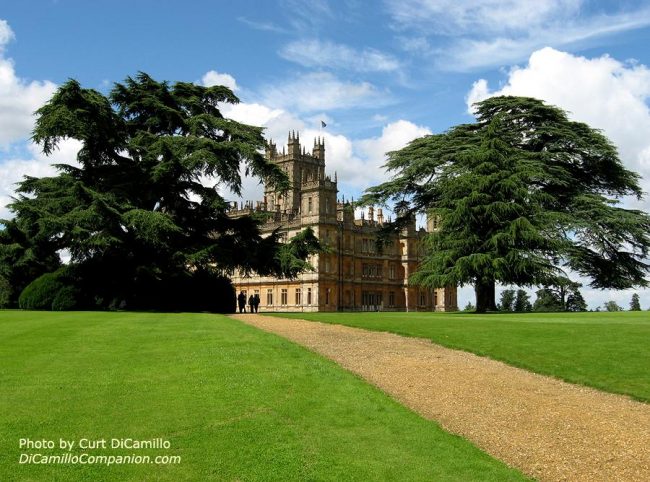
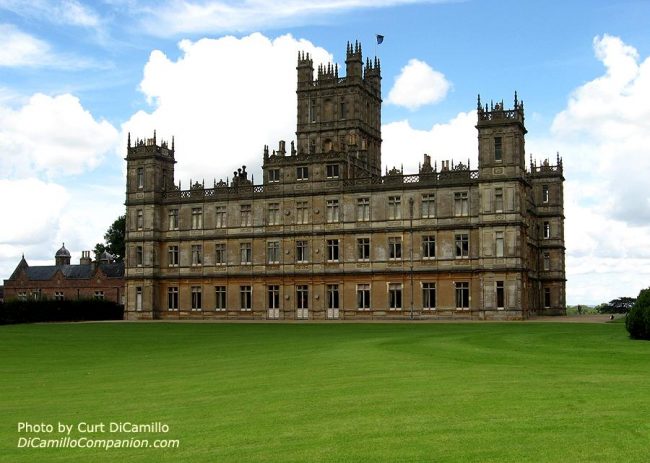
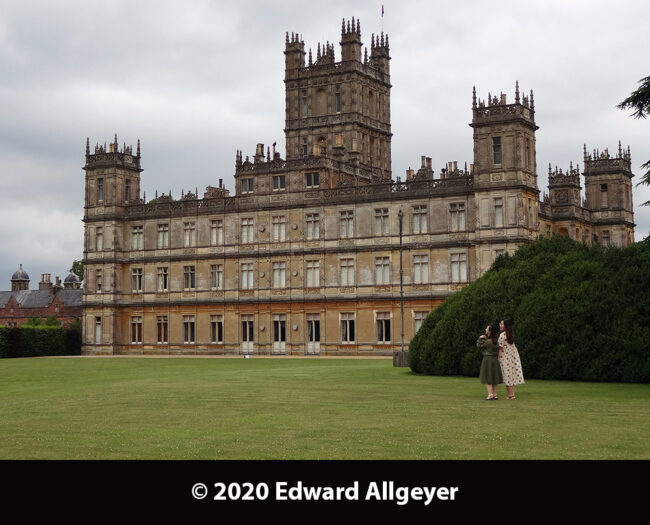
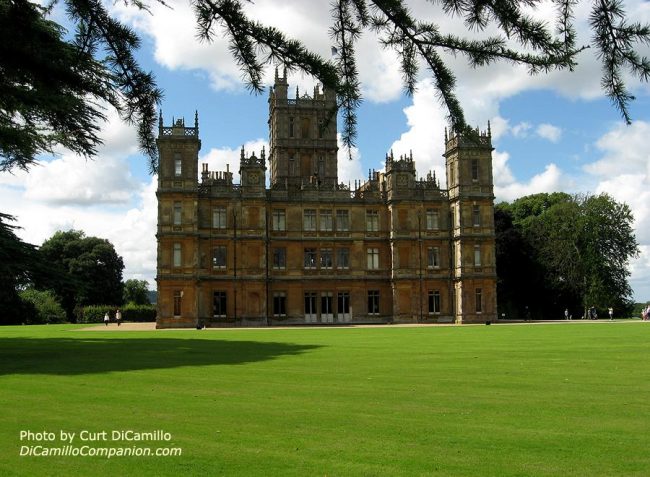
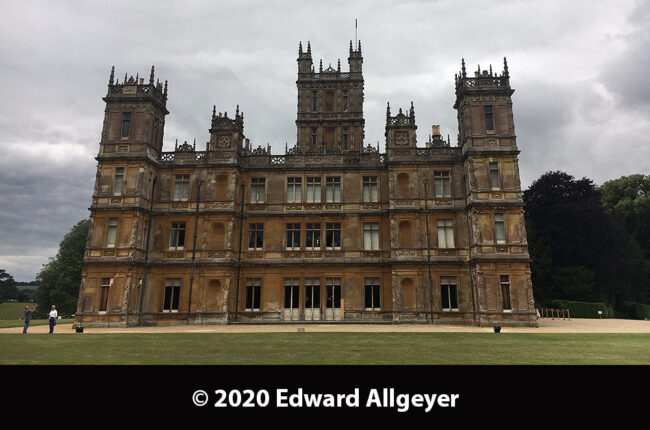
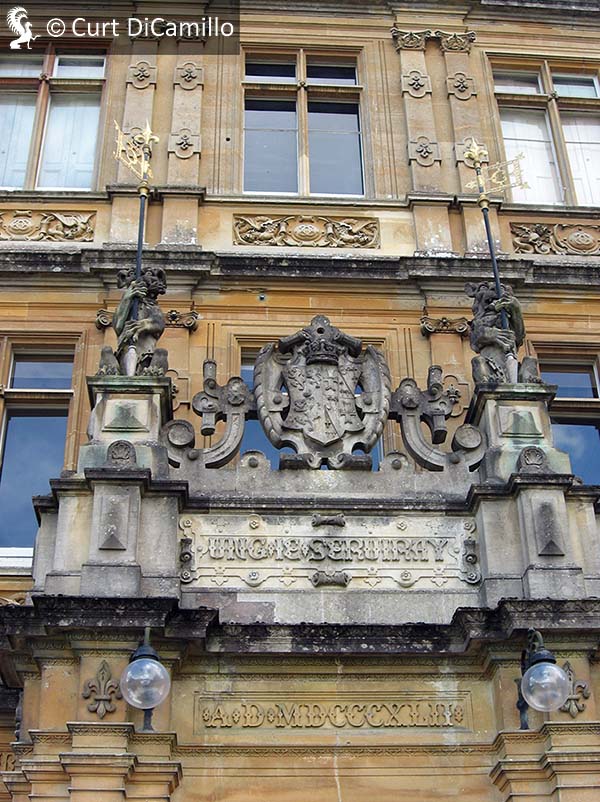
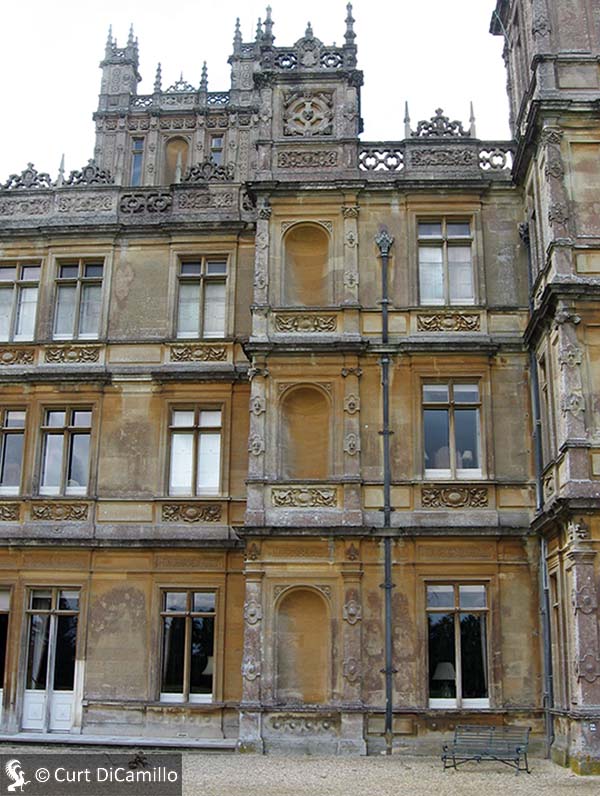
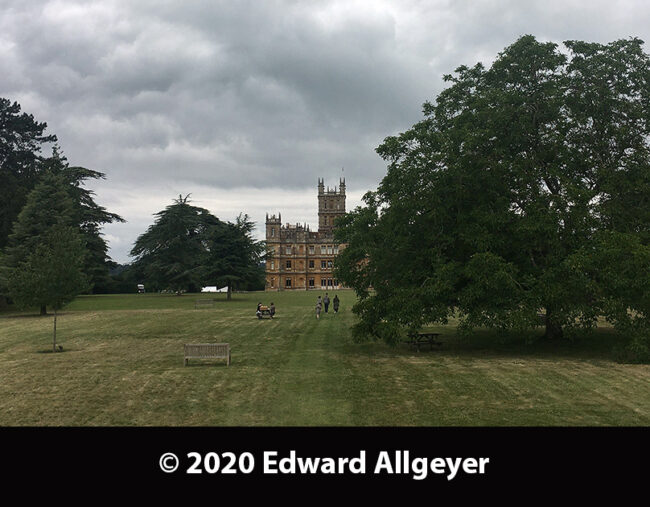
The house from the park
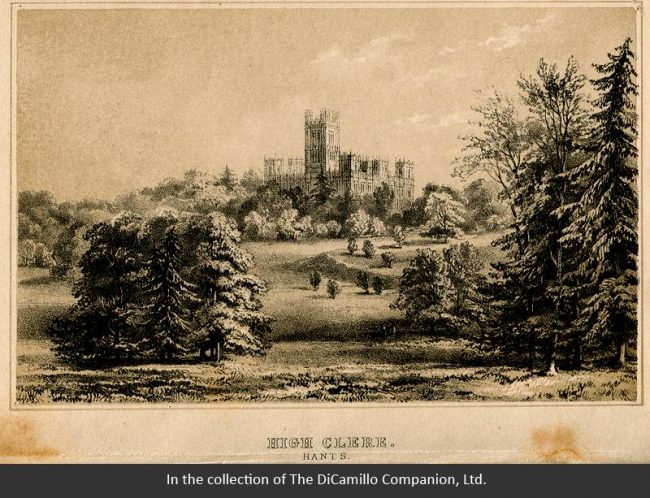
Tinted lithograph of the house from "Burke's Visitation of Seats," 1852.
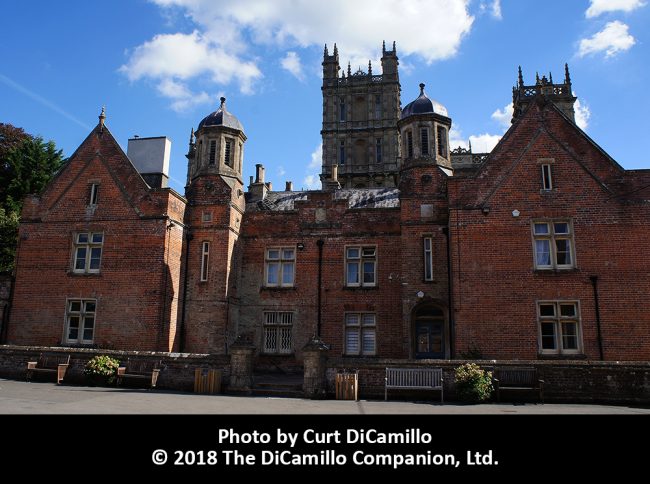
Side facade brickwork of earlier Tudor house
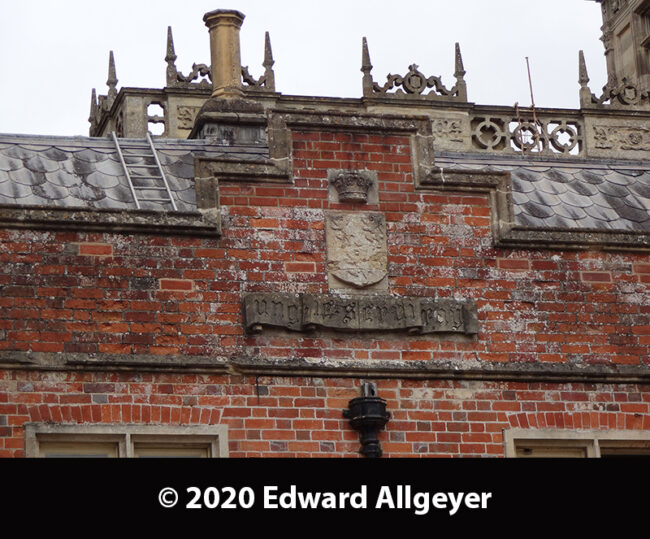
Detail of Tudor brick and stonework as it attaches to the 19th century house
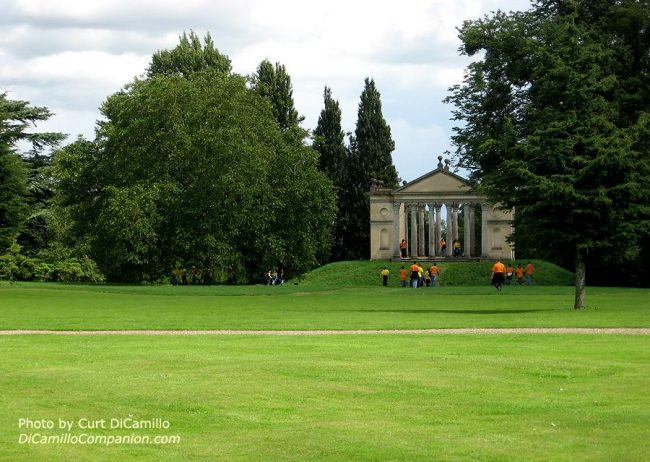
Jackdaw's Castle
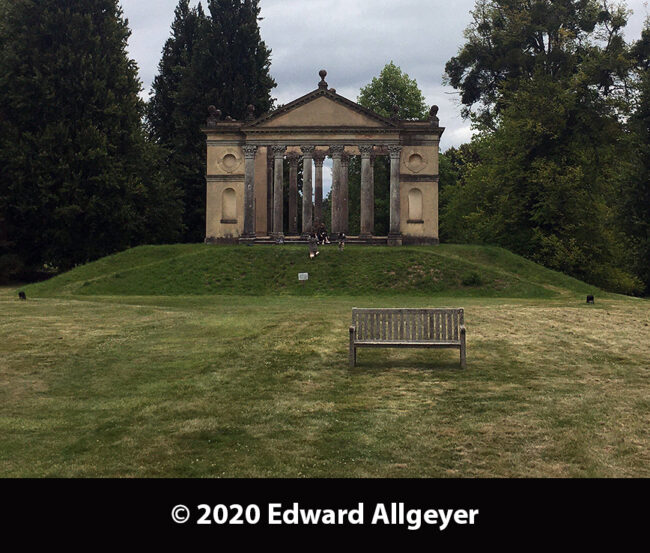
Jackdaw's Castle
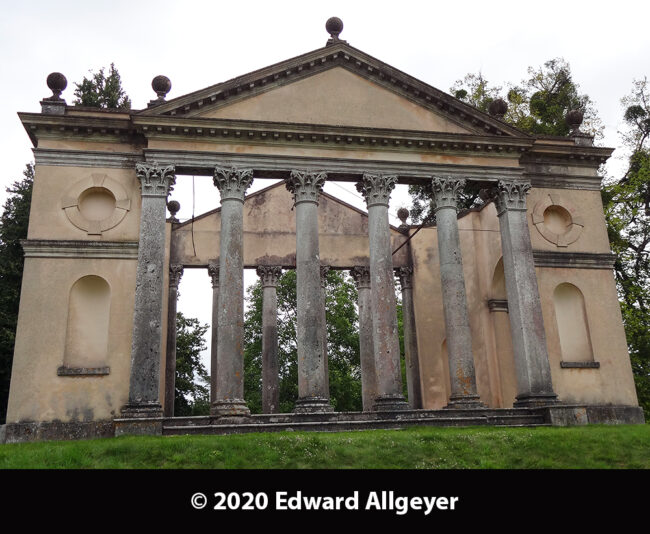
Jackdaw's Castle
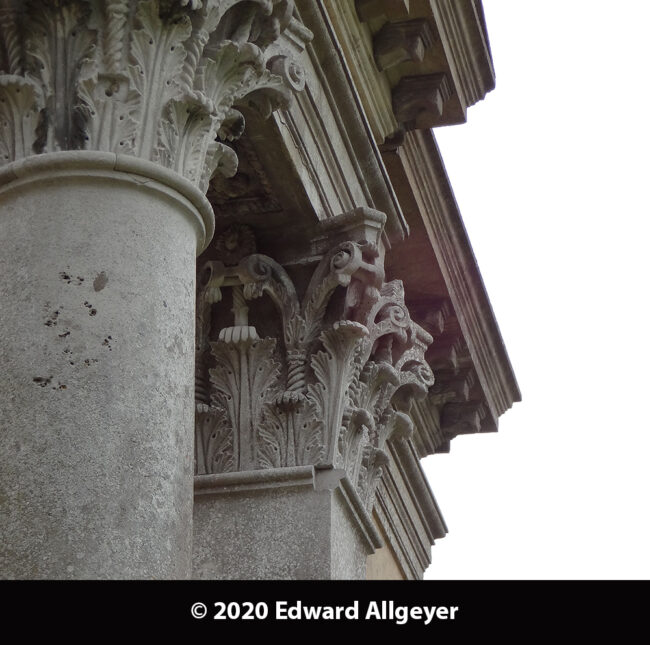
Detail of columns from the first Devonshire House, London, on Jackdaw's Castle.
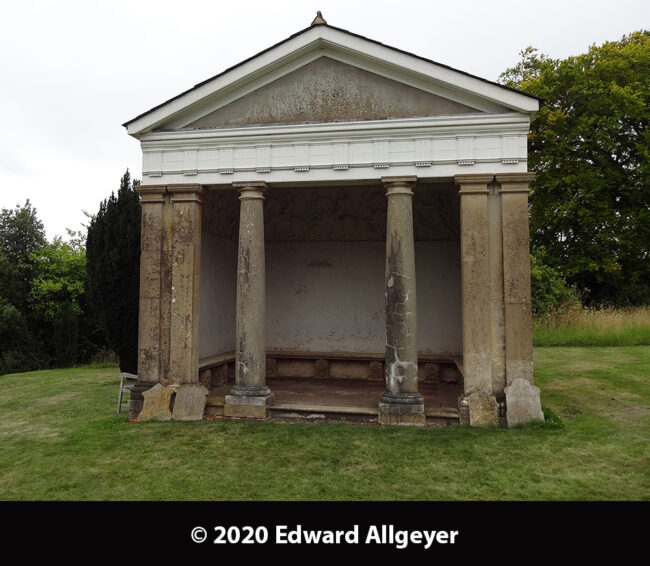
The Etruscan Temple
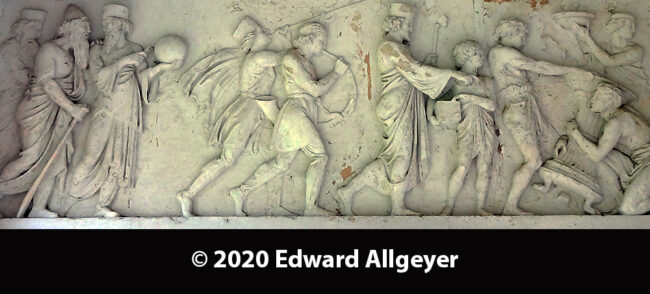
Frieze inside the Etruscan Temple
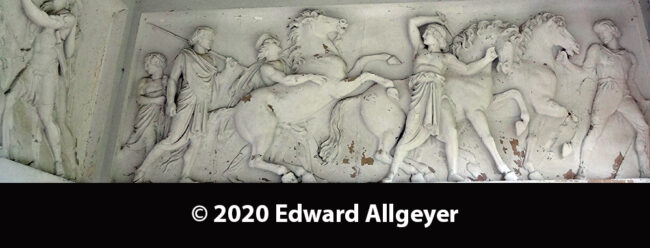
Frieze inside the Etruscan Temple
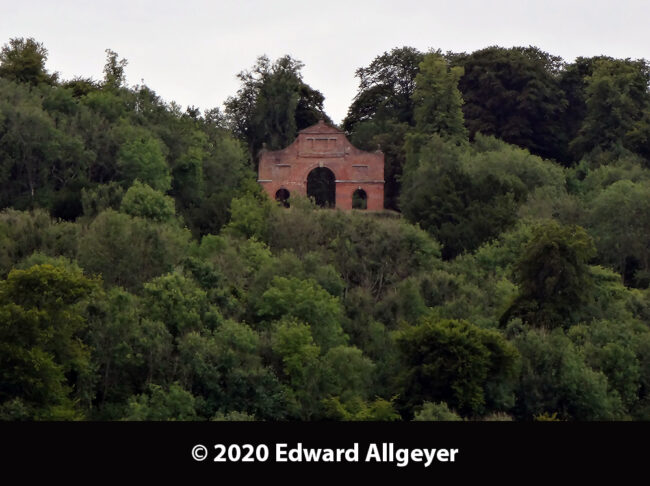
Heaven's Gate
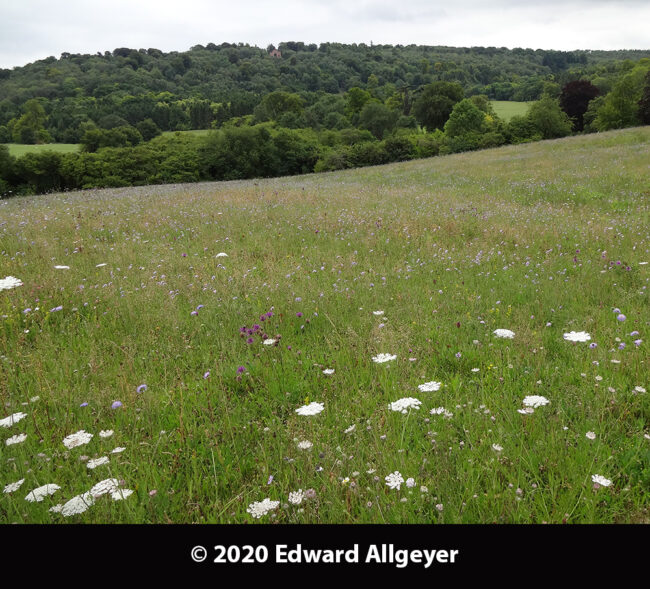
The Highclere Estate, with Heaven's Gate in the far distance.
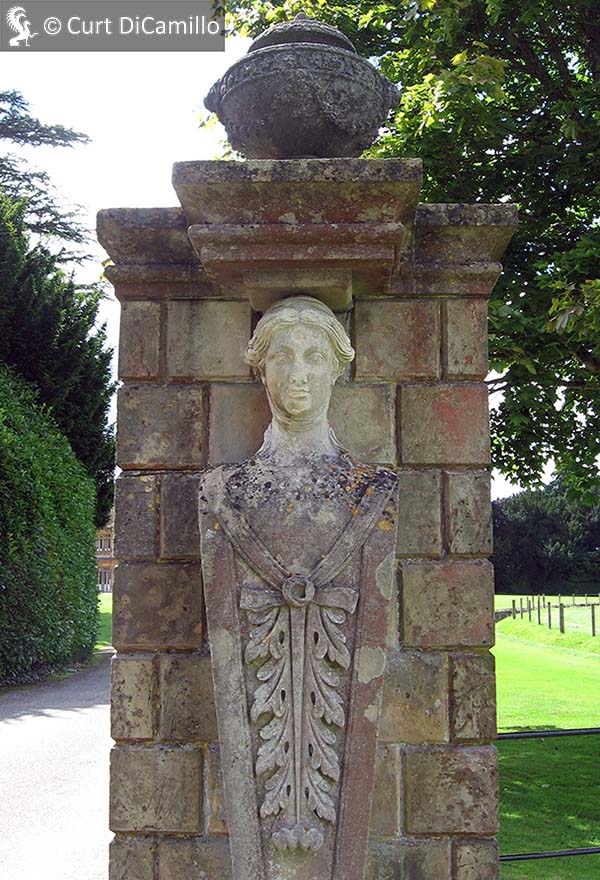
Gate pier
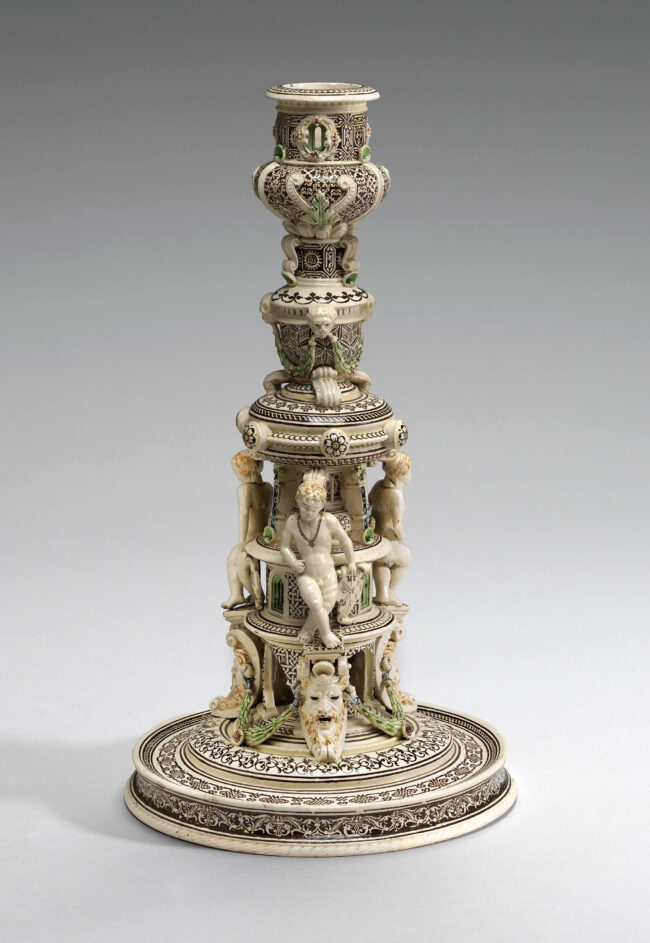
Circa 1547-59 French earthenware candlestick once owned by Alfred de Rothschild, who left it to his daughter, Almina Wombwell, Countess of Carnarvon. Once in the collection of Highclere Castle, the candlestick is today in the Widener Collection, National Gallery of Art, Washington. This image is in the public domain.
Earlier Houses: The current house incorporates the 18th century Highclere House, whose foundations sit on the medieval palace of the bishops of Winchester, who owned the Estate from the 8th century.
Built / Designed For: Rebuilt for the 3rd Earl of Carnarvon
House & Family History: Upon his death in 1692 Sir Robert Sawyer bequeathed Highclere to his only daughter, Margaret. Her second son, The Hon. Robert Sawyer Herbert (1693-1769, younger brother of the 9th Earl of Pembroke), inherited the Highclere Estate, laid out the grounds, and began its picture collection. In the 18th century his nephew and heir, Henry Herbert, was created Baron Porchester and 1st Earl of Carnarvon by George III. Between 1839 and 1849 the square, Georgian Highclere House was remodeled and rebuilt as Highclere Castle for the 3rd Earl of Carnarvon by Sir Charles Barry in his High Elizabethan style (the foundation stone for Barry's Houses of Parliament was laid in 1840 and it's likely that the design for Highclere was influenced by the famous palace on the Thames). The external walls, faced in Bath stone, are decorated with many features of Renaissance architecture, while the Great Hall is modeled on an Italian Renaissance central courtyard, with a dash of Elizabethan architectural elements. Often called "Canada's Birth Certificate," the British North America Act, which created modern Canada, was very likely drafted at Highclere. That's because the 4th Earl of Carnarvon was secretary of state for the colonies in 1867, the year the act was signed. It was at Highclere that Sir John A. Macdonald, and other Canadian founding fathers, spent time with Lord Carnarvon drawing up the document. The 5th Earl of Carnarvon famously financed the expedition to Egypt that discovered the tomb of Tutankhamen, the richest archeology discovery in history. On November 26, 1922 the earl and Howard Carter first uncovered the steps leading down to the tomb of the boy-Pharaoh. The earl of Carnarvon was first intrigued by archaeology as a small boy when he went digging around the Park at Highclere, an area even today extraordinarily rich with the evidence of early man. Later the 5th Earl was sent to Egypt to recover after a serious auto accident, and, during his time there, discovered a new fascination: the relics of the past. He funded and participated in excavations in Egypt beginning in 1907, when he was 41, until his death in 1923. Ironically, Lord Carnarvon died without having set his eyes on the ancient king with whom his name will always be linked; only four months after discovering the entrance to Tut's tomb the earl cut a mosquito bite with his razor while shaving; the wound become septic and blood poisoning set in. The earl died in Cairo on April 5, 1923 from pneumonia (brought on by the blood poisoning), thus setting in motion the myth of the curse of the mummy, which, in fact, has no basis in fact. The 5th Earl's grandson, the 7th Earl, was Queen Elizabeth's horseracing manager (in 1902 the 5th Earl established Highclere Stud to breed thoroughbred racehorses; in 1905 he was appointed one of the stewards at the new Newbury Racecourse near Highclere). There was a glorious victory in June 1974 when the queen's filly "Highclere" won the Prix de Diane (The French Oaks) at Chantilly. In the 21st century Highclere has become internationally famous as Downton Abbey in the TV series of the same name.
Collections: Highclere contains a collection of the 5th Earl of Carnarvon's treasures from his discovery of the Tomb of Tutankhamen, some of which were only rediscovered in the House in 1987. Highclere also contains Napoleon's desk and chair from St. Helena. Lady Evelyn Stanhope, daughter of the 6th Earl of Chesterfield, married the 4th Earl of Carnarvon in 1861 and brought substantial collections and property from Chesterfield House to Highclere. Lord Chesterfield's silver was sold at Sotheby's on February 4, 1988 for £561,682. One of the most important pieces in the Highclere collection is "Charles I with M. de St. Antoine," a large oil by Anthony van Dyck that shows Charles I on horseback accompanied by his riding master, Pierre Antoine Bourdon, Seigneur de St. Antoine. Van Dyck painted different versions of this portrait. The prime version is the 1633 original in the Royal Collection that hangs in Buckingham Palace. The Highclere version is a 1635 copy, which hangs in the State Dining Room.
Garden & Outbuildings: The Hon. Robert Herbert very likely engaged his architect brother, the 9th Earl of Pembroke, to design a number of follies and garden buildings at Highclere. These include Milford Lake House, a Palladian style building considered by Howard Colvin the most important of Pembroke's work at Highclere; the Ionic Temple (also known as the Temple of Diana, probably built in the second half of the 18th century and remodeled by Sir Charles Barry in the 19th century); Jackdaw's Castle of circa 1740, which includes Corinthian columns salvaged from the first Devonshire House, London (burned in 1733); and Heaven's Gate, an eye-catcher of 1731 built on Sidown Hill that collapsed in the 18th century. Its fall was witnessed and recorded by the Rev. J. Milles, who wrote "we had not been there above half an hour before we saw it cleave from ye foundations and it fell with such a noise yet was heard at three or four miles distant." Between 1774 and 1777 Capability Brown laid out the Park for the 1st Earl of Carnarvon, moving the village in the process (the remains of the church of 1689 are at the southwest corner of the House). The great Cedar of Lebanon trees on the Estate were grown from seeds brought from Lebanon by the famous 18th century seed collector Bishop Stephen Pococke. The hybrid holly Ilex x altaclerensis (Highclere Holly) was developed here circa 1835 by hybridizing the Madeiran Ilex perado (grown in a greenhouse) with the local native Ilex aquifolium.
Chapel & Church: The 19th century Gothic style stone and flint chapel built by Henrietta, 3rd Countess of Carnarvon, is extant.
Architect: Thomas Allom
Date: 1860sArchitect: Thomas Hopper
Date: 1833Architect: Henry Herbert (Pembroke and Montgomery)
Date: Mid-18th centuryArchitect: Charles Barry Sr.
Date: 1839-49John Bernard (J.B.) Burke, published under the title of A Visitation of the Seats and Arms of the Noblemen and Gentlemen of Great Britain and Ireland, among other titles: Vol. I, p. 1, 1852.
Country Life: CXXVI, 18 plan, 1959. Jun 30, 1988.
Title: Disintegration of a Heritage: Country Houses and their Collections, 1979-1992, The
Author: Sayer, Michael
Year Published: 1993
Publisher: Norfolk: Michael Russell (Publishing)
ISBN: 0859551970
Book Type: Hardback
Title: Biographical Dictionary of British Architects, 1600-1840, A - SOFTBACK
Author: Colvin, Howard
Year Published: 1995
Reference: pgs. 104, 491, 515
Publisher: New Haven: Yale University Press
ISBN: 0300072074
Book Type: Softback
House Listed: Grade I
Park Listed: Grade I
Current Seat / Home of: George Reginald Oliver Molyneux Herbert, 8th Earl of Carnarvon.
Past Seat / Home of: SEATED AT EARLIER HOUSE: Sir Robert Sawyer, 16th century. SEATED AT CURRENT HOUSE: The Hon. Robert Sawyer Herbert, 18th century. George Edward Stanhope Molyneux Herbert, 5th Earl of Carnarvon, 19th-20th centuries.
Current Ownership Type: Individual / Family Trust
Primary Current Ownership Use: Private Home
House Open to Public: Yes
Phone: 01635-253-210
Fax: 01635-255-315
Email: [email protected]
Website: https://www.highclerecastle.co.uk/
Awards: Voted number 9 in the Top 10 Regal Wedding Venues in the UK in 2011 by "The Times."
Historic Houses Member: Yes